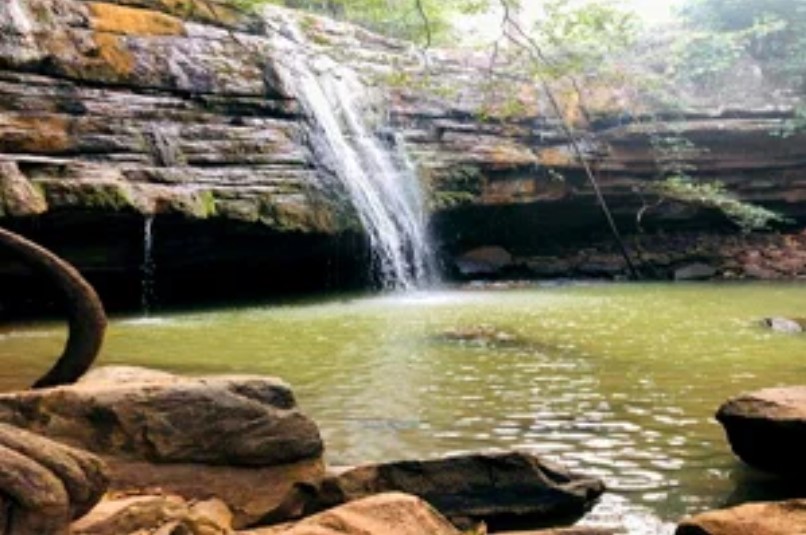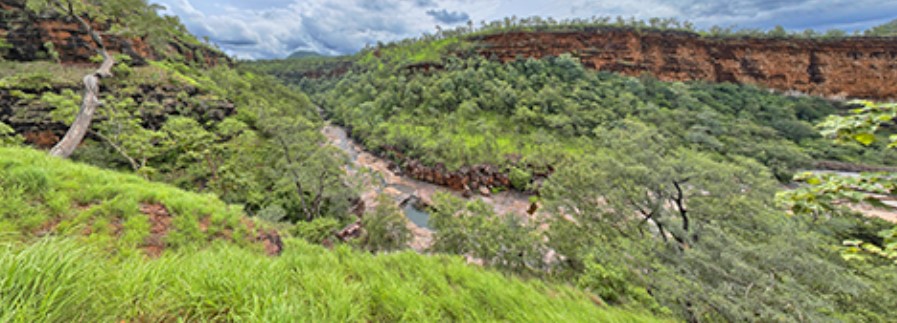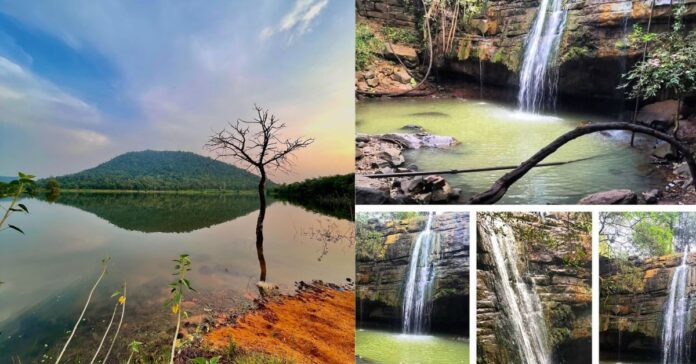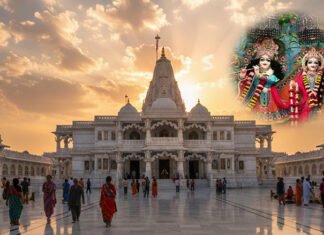Introduction

Bheemuni Paadam Waterfalls Nestled in Seethanagaram Village of Gudur Mandal, Mahabubabad district, Telangana, the Bheemuni Paadam Waterfalls have recently gained popularity among adventurous tourists. This picturesque waterfall cascades from a 20-foot hillock into a semi-circular enclosure, creating a serene atmosphere punctuated only by the sound of falling water.
Bheemuni Paadam Waterfalls History

The legend of Bheemuni Paadam waterfall involves a dramatic rescue mission. A man named Yadava Raju had two wives. When he was away, his second wife, jealous of his first wife and daughter, plotted their demise. She built a house called “LakhaMedha” from flammable wooden sticks, intending to burn them alive.Legend weaves the Pandava prince Bheema into the story. As fate would have it, Bheema intervened, creating a natural passage for water to flow through the hills (Papameda Gutha). This act of heroism saved the lives of Yadava Raju’s first wife and daughter.The mark of Bheema’s intervention is believed to be a rock formation resembling a giant footprint, which gave the waterfall its name, Bheemuni Paadam, translating to “Bheema’s Foot.”
Attractions

1. Rainbow Waters: At sunrise and sunset, the waterfall shimmers with rainbow hues, offering a breathtaking spectacle.
2. Natural Pool: The 70-foot drop creates a refreshing pool at the base.
3. Mysterious Cave: A 10-kilometer-long cave near the falls adds intrigue for explorers.
4. Sacred Space: A small enclosure houses idols of Lord Shiva and Nagadevatha, where visitors often perform rituals.
5. Nearby Lakes: Several lakes in the vicinity provide additional sightseeing opportunities.
Also read: Kolanupaka Temple: A Landmark of Jain Faith
Significance

The waterfall isn’t just a tourist attraction; it plays a crucial role in local agriculture. Its waters feed three nearby lakes, supporting the irrigation of approximately 2,500 acres of farmland annually.
For a spiritual touch, pay your respects at the small temple near the falls, which houses idols of Lord Shiva and Nagadevatha.
Best Time to Visit

While accessible year-round, the monsoon season offers the most impressive water flow. Holidays and weekends typically draw bigger numbers.
Bheemuni Paadam Location:
Seethanagaram Village, Gudur Mandal, Mahabubabad, Telangana, India
Timings:
7 AM to 5 PM daily
Nearby Accommodations:
Several hotels are available in the area, including
1.Padma Vilas Hotel,
2.Hotel Naresh, and
3.Haritha Grand
Getting There
Road ways: Accessible from Gudur Bus Stand, Warangal, and Khammam Bus Station
Rail ways: Mahbubabad Railway Station (25 km away)
Air ways : Rajiv Gandhi International Airport, Hyderabad (nearest major airport)
Development Potential
While the natural beauty of Bheemuni Paadam Waterfalls is undeniable, visitors note that improved facilities and marketing could enhance its appeal. However, the current lack of infrastructure and security measures in this secluded area is a concern that needs addressing.
Conclusion:
Bheemuni Paadam Waterfall is a hidden gem offering a unique blend of natural beauty, mythology, and adventure. Its captivating waterfalls, coupled with the surrounding serene environment, make it a must-visit for nature enthusiasts. While the infrastructure is still developing, the potential for this location to become a major tourist destination is immense.
FAQ’S:
A: The legend tells the story of a jealous wife who tried to kill her husband’s first wife and daughter but was stopped by the Pandava prince Bheema, who created the waterfall to save them.
A: The waterfall is named after a rock formation that resembles a giant footprint, believed to be Bheema’s, hence the name Bheemuni Paadam (Bheema’s Foot).
A: The main characters are Yadava Raju, his two wives, their daughter, and the Pandava prince Bheema.
A: The second wife planned to burn the first wife and daughter alive in a house made of flammable wooden sticks.
A: Bheema created a natural passage for water to flow through the hills, which saved the lives of Yadava Raju’s first wife and daughter.











